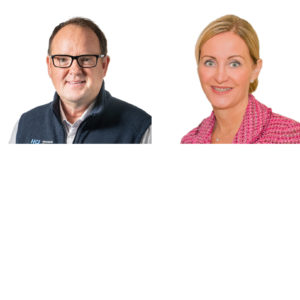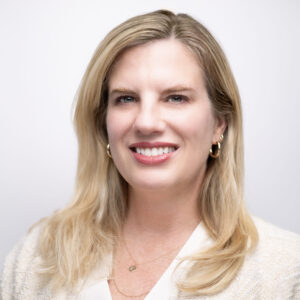Benefits of ‘green’ cleaning
At a glance…
Knollwood’s decision to adopt a sustainable “green” cleaning strategy is based on the belief that a program rooted in best practices will provide the nation’s first military retirement community with the most effective techniques for achieving a healthier indoor environment.
As the director of Environmental Services for the Army Distaff Foundation/Knollwood, the first military retirement community in the country, I’ve always maintained that the indoor environment is as important to our residents’ overall health as the quality of care they receive. Located in Washington, D.C., we offer independent living, assisted living, skilled nursing, and a Special Care Center for individuals with Alzheimer’s and other forms of dementia.
Our decision to adopt a sustainable “green” cleaning strategy is based on the belief that a program rooted in best practices will provide us with the most effective techniques for achieving a healthier indoor environment. Through training, education, and compliance with an established industry standard, we are working toward achieving LEED certification through the Green Seal organization. Regardless of whether we attain certification, we will continue to use “green” cleaning best practices because it is the right thing to do.
Path to ‘green’
As I began to research sustainability, I learned that although the EPA has done much to improve outdoor air quality, the effects from indoor pollutants, such as those generated through improper cleaning procedures, are a considerable risk to public health. Upon learning that the chemicals and procedures we use to clean indoor spaces can cause mild to severe allergic reactions and asthmatic responses, I knew that we needed to adopt a program that would consider the environmental effects of cleaning and, more importantly, the impact on human health.
Our journey down the “green” path began with personal instruction on environmentally friendly cleaning products and materials offered by Daycon Products Company, our supplier. As my staff and I began to see positive results, we realized we wanted to take additional steps. The Green Seal Environmental Standard for Commercial and Institutional Cleaning Services (GS-42) provided us with a blueprint for a more comprehensive and sustainable program. GS-42-designed to reduce toxicity, waste, and exposure for both building occupants and environmental staff-offered a systematic approach to product and equipment selection, staff training, and planning.
For our GS-42-compliant training, we chose the Building Wellness Institute. Its comprehensive Green Seal GS-42 accredited training program provided us with instruction on product selection and green, healthy cleaning techniques, as well as information on how to communicate the benefits of our program and build awareness across the entire Knollwood facility. Additionally, the program’s “train the trainer” approach enabled us to educate our entire staff cost effectively.
Environmental stewardship
Completing the Building Wellness Institute Certification Training program and adopting the GS-42 guidelines enabled us to both raise the bar for quality care and generate tangible results in resident satisfaction and cleaning efficiency. The knowledge we gained from training allowed us to make broad changes in the chemicals and equipment we use, our cleaning techniques, and how we involve the entire Environmental Services staff in the equipment and supply selection process.
We’ve also introduced a number of specific changes related to product use and cleaning techniques, including:
Elimination of all traditional cleaning chemicals. Replaced with environmentally preferred/Green Seal-certified products, which are better for the environment and safer for our staff and residents.
Replacement of soap and paper towel dispensers with touch-free dispensers throughout the entire facility.
Placement of touch-free hand sanitizers throughout the facility.
Replacing traditional upright and canister vacuum cleaners with high-performance vacuums that are fitted with HEPA filters that capture 99.5% of the particulates that would otherwise be redistributed into the air by traditional vacuum cleaners.
Use of vacuum cleaners, floor scrubbers, and other heavy equipment that meet ergonomic and safety standards to protect the health and well-being of our environmental staff.
Replacement of all feather dusters with microfiber cloths that capture dust and particulates from surfaces-in most cases without the use of chemicals.
Lessons, challenges, surprises
One of the key challenges to implementing our GS-42-compliant cleaning program was communication. Specifically, we needed to communicate program benefits to all administrative units, residents, and Environmental Services personnel, and get all parties on the same page. Through regular informational meetings with residents and staff, we built awareness about new products and procedures, and slowly and steadily aligned everyone with our program goals.
While we knew that our new program would improve the quality of our indoor environment, we were surprised to see that it also helped us improve efficiency and save money. Consolidating to fewer products (in some cases replacing six products with one) enabled us to spend less on supplies, streamline ordering, and gain greater control over our products and their proper use.
Our staff members now view themselves as “environmental technicians.”
More difficult to quantify, but by no means less significant, was the positive effect that implementing a GS-42-compliant program had on our own Environmental Services staff. The successful implementation of our program had a great deal to do with changing perceptions of how our residents view our staff and how our staff members view themselves. Through active participation and continuing education, we are now able to impress upon our staff members that what they do in their jobs makes a difference in the lives of others. By applying discipline to the job of cleaning, adopting best practices, and encouraging communication and feedback, our staff members now view themselves as “environmental technicians.”
We couldn’t have accomplished any of this without a supportive executive management team. We have come a long way and will continue toward our goal of GS-42 certification.
Cynthia Akins is the director of Environmental Services at Knollwood, a premier military retirement community. She can be reached at
cakins@armydistaff.org or (202) 541-0400.
To send your comments to the editor, e-mail mhrehocik@iadvanceseniorcare.com.
Long-Term Living 2010 April;59(4):26-27
I Advance Senior Care is the industry-leading source for practical, in-depth, business-building, and resident care information for owners, executives, administrators, and directors of nursing at assisted living communities, skilled nursing facilities, post-acute facilities, and continuing care retirement communities. The I Advance Senior Care editorial team and industry experts provide market analysis, strategic direction, policy commentary, clinical best-practices, business management, and technology breakthroughs.
I Advance Senior Care is part of the Institute for the Advancement of Senior Care and published by Plain-English Health Care.
Related Articles
Topics: Articles , Operations











